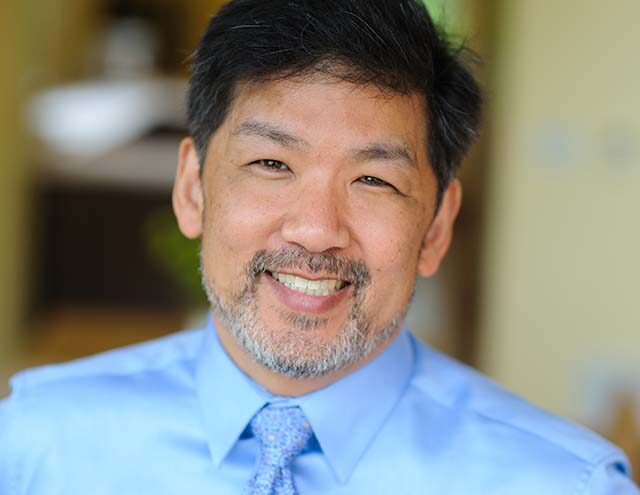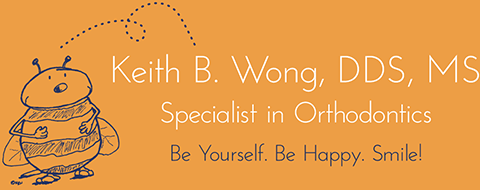Is there an official Invisalign Orthodontist?
There is a very meaningful difference between an orthodontist who has mastered the specific and unique way one needs to approach any case with Invisalign and one who has not completed the associated “learning curve.” There is an even greater (and more crucial) difference between an orthodontist who has expertise utilizing this clear orthodontic aligner modality and a general dentist who promotes him or herself as a “certified Invisalign provider.” Unfortunately, there is currently no official designation that can point to an ideal Invisalign practitioner with 100% accuracy, however, there are several steps one can take to locate an excellent provider; steps I will cover below. First, some context is needed.
The educational/experiential difference between an orthodontist and a general dentist:
According to Aligntech, the parent company that makes Invisalign aligners, the typical general dentist who holds him or herself out as an “Invisalign doctor” has completed a weekend course limited to instruction in logging onto the Invisalign doctor site, submitting records for a prospective case, and accepting and paying for that case. Furthermore, this type of practitioner starts, on average, only 3 cases per year. (Several years ago, Aligntech, in response to a glut of unsatisfactory results produced by unskilled providers, attempted to institute minimum criteria to remain certified as an Invisalign doctor, but failed to stand firm in this when confronted with an eruption of discontent from a subset of general dentists.)
The difficulty for general dentists rests in the fact that Invisalign, although utilizing computer technology to produce a series of aligners, is in no way a comprehensive orthodontic treatment-planning program, as commonly believed. Well-meaning general dentists have had no fundamental training in comprehensive orthodontics (the average number of comprehensive orthodontic cases that a dental student in the US treats and finishes is ZERO). Why? Dental students must become proficient in general dentistry, which includes numerous other subjects that are unrelated to the biomechanical process of moving teeth orthodontically. Orthodontics is a dental specialty pursued through post-graduate education. Orthodontists, like other dental specialists, have completed dental school and been accepted into highly competitive graduate programs and residencies that focus exclusively on the practice of that specialty. To illustrate the different curricula of an undergraduate dental school and that of a graduate orthodontic specialty program, I have included links to examples of each:
Only 2 of the 106 classes in the University of Minnesota dental school program are related to orthodontics; in addition, only half the dental students can choose an orthodontic rotation to observe what orthodontists generally do. There is no specialized education or experience in the complexities of tooth movement or skeletal growth and aging as it relates to tooth position, facial forms, and long term dental stability.
By comparison, all 33 classes of the post-doctoral orthodontics residency program at the Arizona School of Dentistry & Oral Health focus on orthodontics. These subjects include the biological basis of orthodontic tooth movement, the biomechanical principles of orthodontic appliances, the clinical strategies of orthodontic treatment, and current orthodontic research. Orthodontic residents also actively treat patients under the supervision of practicing orthodontists as part of their training.
The stark difference between the education of a general dentist versus that of an orthodontist helps one understand why seeking an orthodontist for Invisalign aligner treatment is strongly advised. Invisalign aligners are a tool in the hands of knowledgeable and experienced orthodontists, not a stand-alone treatment.
The educational/experiential difference between an orthodontist that is expert in clear aligner orthodontics and a non-expert orthodontist:
The basis of difference between two orthodontists, one an expert Invisalign clinician and one less skilled in its use, is in the level of knowledge regarding clinical capabilities and limitations of orthodontic aligners as a specific modality of treatment and the differences, which are many, between that modality and the use of braces/fixed appliances. These differences are not trivial. For example, because braces can push and pull whereas orthodontic aligners can only push, the phasing of treatment when using aligners must often be quite different than when using conventional treatment. This, and other distinctions, mean that treatment planning, which must be completed at treatment onset, is highly dependent upon a thorough understanding of Invisalign as a separate and unique appliance.
In addition, clear aligner tooth movement is distinctly intermittent in comparison to braces. This implies that Invisalign treatment alone, in cases where a more sweeping, larger range of motion is required (e.g. alignment of a distant impacted tooth or correction of a significant rotation), is insufficient. To make this determination and address the situation, a practitioner must not only be an orthodontist, who, unlike a general dentist, can combine treatment modalities, but one experienced in the use of Invisalign, familiar with its capabilities and limitations, and proficient in the proper combining of aligners with other treatment modalities.
Further, there are numerous idiosyncratic aspects of excellent clinical orthodontic aligner treatment that require the surrender of assumptions associated with fixed appliance treatment (braces). These aspects are mastered by: 1) attending advanced Invisalign-specific courses; 2) collaborating at advanced peer-to-peer symposia; 3) intently adapting ongoing treatments as indicated; 4) appropriately integrating new technologies to enhance the efficacy of the specific biomechanics of Invisalign; and 5) creatively integrating known orthodontic modalities with Invisalign treatment to address all aspects of a given case by the most effective means available (i.e. combining treatment methods to offset biomechanical deficiencies of any given modality).
In Summary: The learning curve for effective and efficient Invisalign use is significant.
Why aren’t all orthodontists expert clear aligner orthodontists?
First, it must be said that, just as in any field, not all orthodontists are experts, regardless of modality.
Second, in addition to experience, becoming an expert in the use of Invisalign aligners requires interest, focus, and energy. The orthodontist must commit him or herself and staff to continual learning while maintaining motivation for excellence. Not everyone can, or desires, to do this. Invisalign aligners have inherent limitations due to their mechanical actions, and the orthodontist must develop means to achieve excellent results despite these limitations.
Third, orthodontic residency programs vary significantly in their approach to training aligner utilization. A few programs, like Univ. of the Pacific, have an excellent Invisalign education but most are limited and some even ignore aligners altogether. Some recent graduates are not only relative neophytes in traditional clinical orthodontics but absolute neophytes in the optimum use of aligners.
The evolution of Invisalign into an excellent orthodontic treatment option:
At present, Invisalign aligners are a very efficacious and predictable orthodontic modality when used knowledgeably. It is important to note that Aligntech has spent approximately one billion dollars in research & development since Invisalign’s inception in 1999. In one of the most important moves in Invisalign’s history, Aligntech hired the preeminent research-orthodontist in the field of Biomechanics (the study of the mechanical laws relating to the movement or structure of living organisms, specifically teeth in this case), John Morton, away from the University of Connecticut. Since then, he has led the way to numerous technical and biomechanical innovations.
Invisalign has developed a sophisticated dashboard that gives the orthodontist control of treatment from the first to the last aligner, allowing full customization of treatment. But like all modalities, there are strengths and limitations. Aligntech has recognized that to move the technology forward, it is crucial to have experienced orthodontists who are committed to using and developing the best treatment practices with Invisalign. To that end, Aligntech has created the Key Provider Program (KPP) that both assists specific practitioners in providing the most advanced treatment and, also, partners with them in the development of Invisalign aligners as a treatment tool. The list of those in the KPP is not public. However, there are ways by which a patient or parent may assess an orthodontist’s skill.
How to choose an Invisalign Orthodontist
First, to reduce the field of prospective clinicians, choose an orthodontist to do your orthodontics. If you skipped over the links to the respective curricula of the dental student and the orthodontic resident (who had previously graduated from dental school), I recommend that you peruse them below. These illustrate, most pointedly, the educational hurdle for the well-meaning dentist who would like to add orthodontics to his or her practice:
Second, attempt to determine which orthodontists are excellent orthodontists. Online resources such as Yelp can give you a glimpse into comparative practices prior to making contact. By reading reviews one can get a sense of whether a doctor is a definite “no” or a “let’s see.” You can search “Orthodontist,” “Invisalign,” or “Invisalign orthodontist” directly on Yelp, or another system. Reviews such as these are not definitive, of course, and only a starting point.
Third, visit the Invisalign Doctor Locator. Aligntech assigns classifications to practices (unfortunately, not individual practitioners) based upon the number of historical and recent cases. Current designations range from Bronze to VIP Diamond Plus (Bronze, Silver, Silver Plus, Gold, Gold Plus, Platinum, Platinum Plus, Diamond, Diamond Plus, and VIP Diamond Plus). Higher designations are awarded based on the number and type of cases treated over the most recent six-month recording period and total experience. Dr. Wong is a VIP Diamond Plus Invisalign orthodontist and achieved this status as a sole practitioner. He is recognized as one of the top <1% providers in North America.

Differences across Invisalign provider levels are significant. The approximate number of Inivsalign starts per six months for each level is listed below:
- Bronze<5 in six months
- Silver<24
- Gold<30
- Gold Plus<60
- Platinum<100
- Platinum Plus<140
- Diamond<200
- Diamond Plus>200
- VIP Diamond Plus>200 plus the “Valued Invisalign Provider” distinction awarded by Invisalign based on historical usage and other factors. These are the most experienced providers.
Note: Some caution should be used when interpreting this type of classification. While it is true that one needs a certain mass of experience to become an expert, it does not necessarily follow that case experience implies expertise. For example, every expert golfer has golfed many, many times, but many more golfers golf as frequently and are still self-proclaimed “hackers.” Usually, these “hackers” have not invested time, effort, and energy into critical analysis and improvement (i.e. lessons and focused practice). This is true in any endeavor or field. Seeking multiple complimentary examinations from orthodontists is recommended for this reason.
In addition, as noted above, in a multi-practitioner office, these classifications reflect aggregate practice volume, not that of each doctor. Thus, in a multi-doctor practice, a high-volume practice, or a clinic/corporate setting, the classification may be “Diamond Plus” but the doctor you see may not be expert or especially experienced. In addition, the high-volume classification may be associated with a practice culture that you would not otherwise choose, such as the sharing of patients across practitioners, or high-volume tactics designed for profit maximization. As an example, an orthodontist who had been classified in the leading category, and who perpetually offered Groupon Invisalign at significantly lower-than-market fees, made the news in 2017 by closing his doors without warning, leaving his patients without recourse.
Fourth, request personal or professional referrals from friends or your dentist/hygienist. It is recommended, however, as with all sorting methods, that one confirm these recommendations with other sources. There are several reasons for this: 1) your friend or dental professional may not appreciate the same attributes in an orthodontist as do you; 2) he or she may have a bias, pro or con, regarding Invisalign; and/or 3) his or her favored orthodontist may not be adept at Invisalign.
Finally, at your investigation’s conclusion, schedule and attend complimentary examinations with the practitioner or practitioners identified through the above. Do not make assumptions. An examination, its thoroughness, the professionalism of the doctor and his or her staff, and the recommendations made, will greatly inform you as to the most appropriate choice. In an age of online shopping, it is second nature to make choices based upon superficial impressions. Health care is not the place for superficiality, however, and make no mistake, orthodontics is healthcare. The difference between proper and improper treatment is not only appearance but the stability and longevity of one’s teeth. Improper alignment leads to tooth fractures, gum disease, and eventual tooth loss. Proper alignment results in not only a beautiful smile but a healthy one. Orthodontists, just as with all professionals, are not interchangeable. Your on-site assessment is the best means of determining if the practitioner is truly skilled and someone with whom you wish to begin such a relationship. Fortunately, such examinations are given free of charge; so, take advantage of this in making your decision. (Note: Free of charge does not mean “can be canceled”. Orthodontists have limited time for examinations and must use that time effectively. If an examination is missed, you may or may not be allowed to reschedule. Office policies differ and the reason for cancellation is often considered; however, if you wish to be treated, examinations should be considered as commitments.)
In conclusion: Consider all information noted above; seek complimentary examinations with likely practitioners; employ common sense—and smile; you’re halfway there, already!
I hope this post has been of help to you in choosing an Invisalign provider. Please see Seattle Insider’s Guide to Invisalign for additional information.

